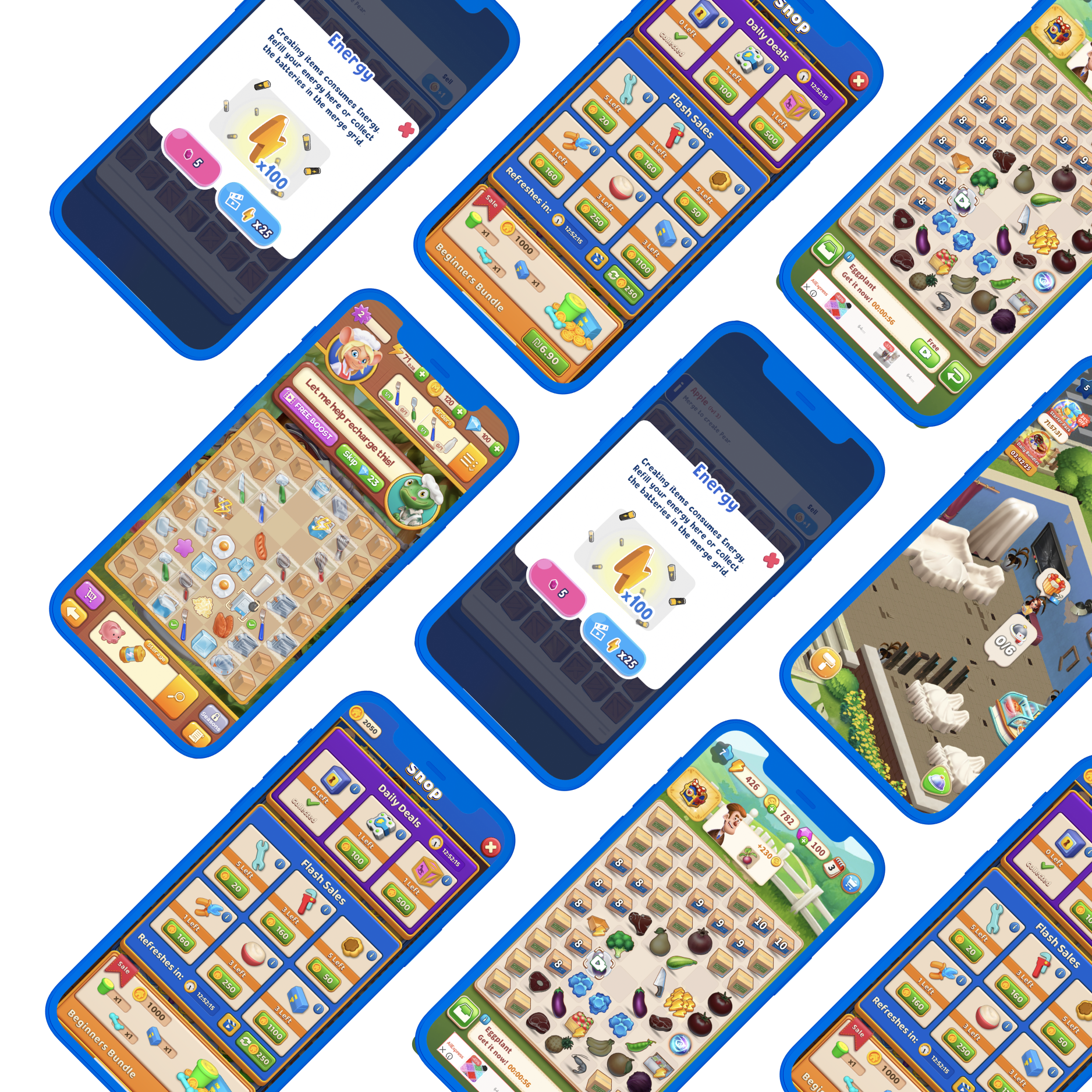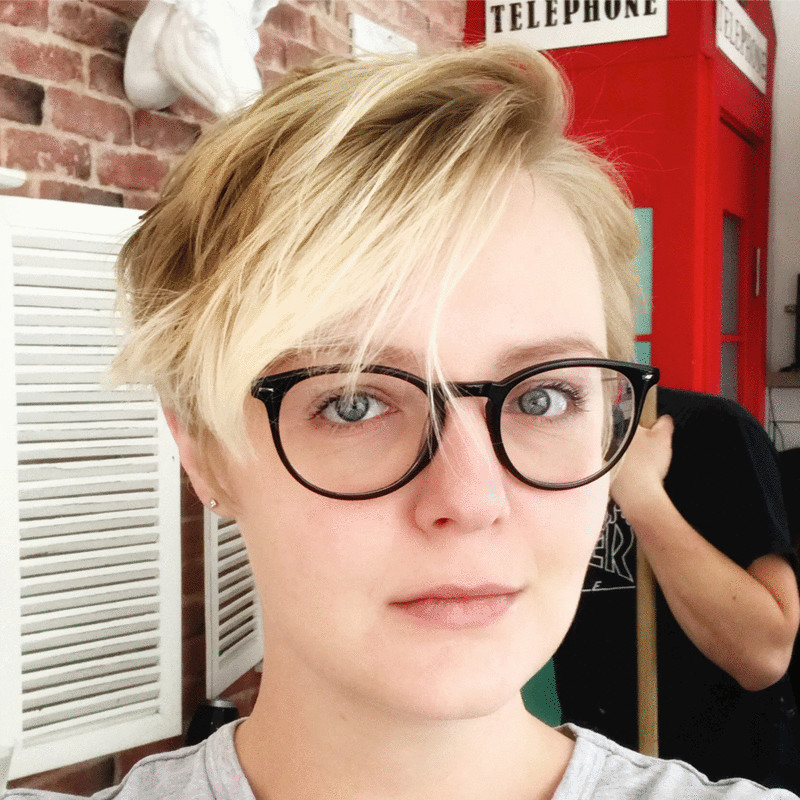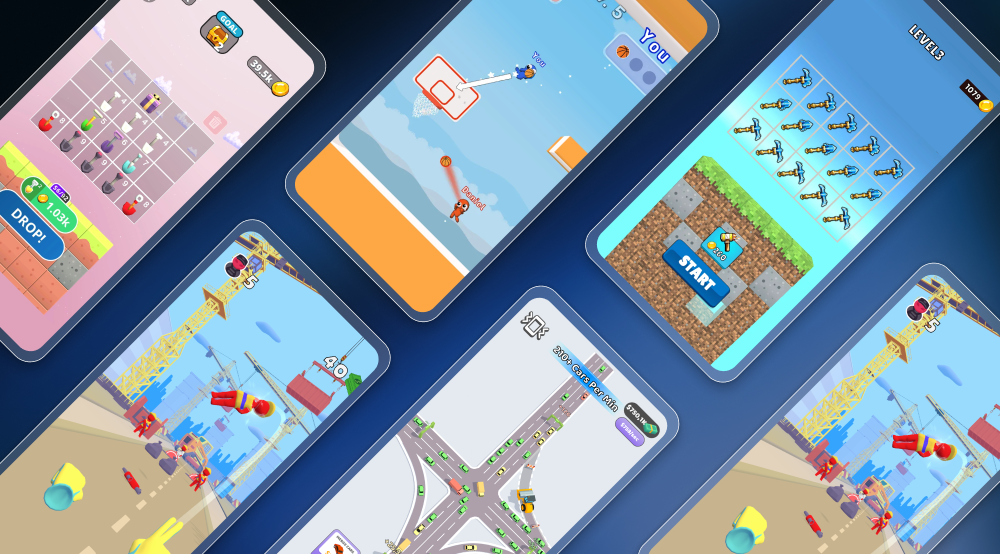According to Deconstructor of Fun, puzzle games are one of the biggest mobile genres, and continue to grow at a market rate of 15% every year. For developers to stand out in the competitive genre, the solution is clear: invest in merge games.
Merge games are currently one of the hottest subgenres in mobile gaming, and for good reason - in 2021, they experienced 19% growth, generating hundreds of millions of dollars. These games follow a consistent pattern - for players to advance, they must combine two objects on a grid together to create a new one.
The premise is simple: each time a player taps on what’s called a “producing object,” they receive a “game object.” Combining two game objects of the same level (e.g. a level 2 strawberry) produces a game object of a higher level (e.g. a level 3 cherry). This differs from match-3 games, which require the player to combine three objects to clear them all off the board.
Not only do these games tap into the huge puzzle gaming audience, but they also provide unique opportunities to monetize. That’s because, eventually, players will run out of resources and require some kind of assistance, often in the form of user coins or money. For those uninterested in spending, they can get another, optimal choice: simply watching a rewarded video. Since these players are motivated by unlocking new objects, rewarded videos can also help them to do this faster, allowing them to bypass the waiting game.
Anna Popereko, Game Design Consultant at ironSource, explores different merge games monetization strategies, and how to increase revenue while still giving users a positive experience. Let’s get started.
1. Offer the ideal amount of energy
To keep the game challenging and help make sure players don't advance too quickly, merge games often limit a resource, like energy. Once players run out of energy, they have two choices: wait or pay for more. But rewarded videos offer a third option: watch this short video.
The key here is to determine the ideal amount of energy to offer with your rewarded videos - offering a large amount of energy will motivate players to watch the video, but with too much energy, and players might not face enough challenges to stay engaged with the game. Try running an A/B test or to find the sweet spot - players should be excited to engage with the rewarded video, but still motivated to gain the energy from the next rewarded video.
In Merge Mayor, for example, the player has been actively creating items, but after enough time, uses up too much energy. The player has just two options to replenish: use a costly game resource or watch a short video and get an even bigger reward. This setup ensures users can understand the benefit of giving their time, not their resources.

2. Create a sense of urgency
Let’s say a user is trying to progress in the game, but doesn’t have the right objects available to merge and beat the level. During the game, a bubble shows up containing the exact object they need, and all they need to do is watch a rewarded video to pop it. It’s a no-brainer, but the clock is ticking - they only have a limited amount of time.
Bubbles holding a rewarded video are a great way to excite users - as the player is merging items, these bubble-like pop ups show up on the grid containing something valuable inside (e.g. coins, items). Naturally, the gamer is motivated to “pop” it - they can see that the clock is ticking, and the bubble will soon disappear. In the example below, the user needs to build up game items (e.g. eggplant, broccoli) to combine and level up, so the bubble offers the exact high-level item they need - saving significant time.
 By creating this sense of urgency, rewarded video bubbles can be a top revenue-generator. While they should be used throughout the game, it’s strategic to get users excited from the get-go, placing more bubbles in the early stages of the game. In order to not tamper with the game economy, bubbles should only offer rewarded videos up to a certain item level.
By creating this sense of urgency, rewarded video bubbles can be a top revenue-generator. While they should be used throughout the game, it’s strategic to get users excited from the get-go, placing more bubbles in the early stages of the game. In order to not tamper with the game economy, bubbles should only offer rewarded videos up to a certain item level.
3. Speed up waiting time
To keep players’ progress at a steady pace, merge games not only limit users by energy, but also by time. If a user’s been playing for an extended period of time, they have to wait for a producing item to replenish itself (and generate more objects the player needs). This period keeps the user from playing for quite some time, often 12 or 24 hours.
While it’s important that the player doesn’t advance in the game too quickly, this waiting period provides a unique opportunity to monetize with a rewarded video. You can use a rewarded video ad to offer the user exactly what they want: skipping the waiting period to continue playing. The user can also choose to skip a smaller amount of time and receive more resources from the producing item. It’s a win-win - your user experience stays positive because the player is excited to engage with the ad, and your ads get more exposure, boosting your game’s revenue. In Merge Inn, for example, the producing item has run out, and the player can use two things to expedite this process: their game resources or simply, their time.

4. Limit placement length
You can also promote rewarded videos in your game by offering a rewarded video ad for a limited amount of time. Like bubbles, your ads can pop up to create a sense of urgency. Because these ads appear outside of the game grid, they are not limited to a specific game page - so you get more flexibility with location and user experience. In Merge Cafe, for example, you can see that the rewarded video is connected with the player’s avatar - the ad is more subtle but also stands out thanks to its unique mobility.
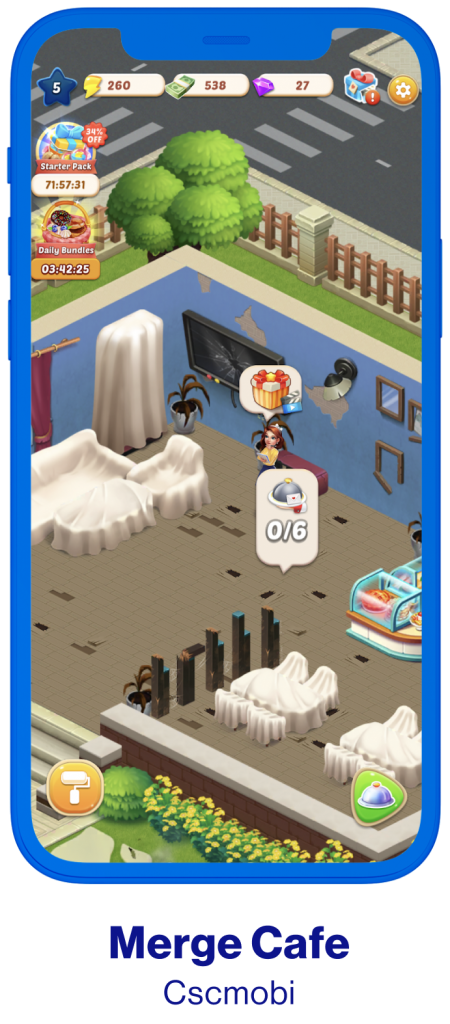
Try to A/B test the best places to put these rewarded video ad icons - whether it’s the main screen or a board with other promotions. To excite the player even more, you can make the ad icon move (or “fly”) around the game. But in order to motivate the player to make the effort, offer a higher reward in these ads than in a regular static placement.
5. Utilize the shop
If a player is exploring the shop, it’s a great time to capture their attention with a rewarded video - after all, they’re already looking to get more items. It’s best to offer a reward that solves their specific needs (e.g. currency, a gacha chest with items, or a specific desired object).
This not only offers players different paths to advance in the game, but if users know they can find free rewards in the shop, it promotes traffic to the store. Even if users start coming to the game shop only for free rewards, they’ll be exposed to different paid opportunities and might eventually become paying players. To maximize the opportunity, A/B test different types of rewards to see which leads to the highest rewarded video engagement.
6. Refresh the shop
Maybe a player wants to progress in the game more quickly, so they check the shop to get a specific item. This turns out to be unhelpful - none of the options in the shop can help the player solve their current needs.
Traditionally, they would have to wait a long period of time for these items to automatically shuffle and update. But a rewarded video can offer another opportunity - instead of offering a specific item, these pop-up ads can offer an automatic refresh of the shop items. There is no guarantee of which new items will pop up, so this is a risk for the user - but it’s more ideal than waiting indefinitely for different items to show up in the shop. In Mergedom, for example, users can see exactly what a shop refresh is worth in coins - making the option to watch a video even more appealing.
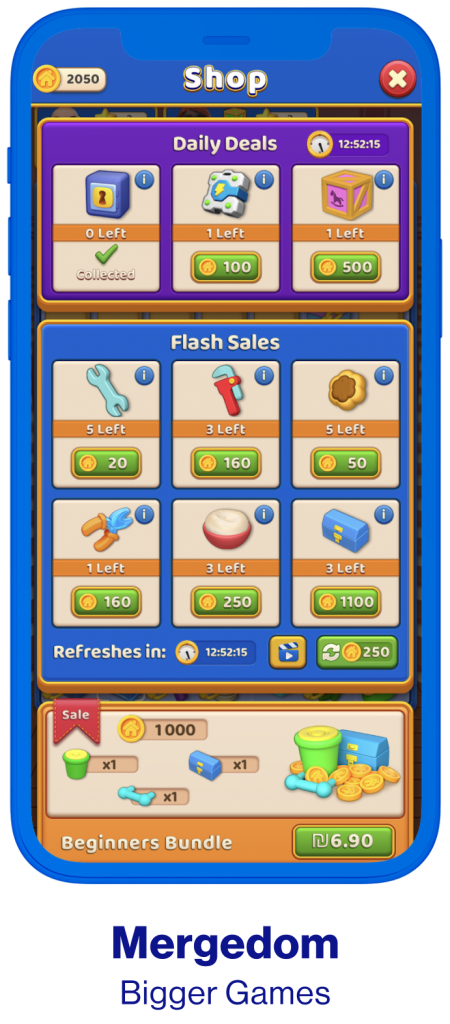
7. Explore using gacha
Finally, you can utilize gacha (a prize vending machine that offers players a random in-game item) to excite users and maximize profit. Gatcha is most often used as a daily bonus activity, but you can place them at any point in the game to motivate users. The premise is simple - by watching a rewarded video, a user can complete a gacha activity (opening a chest, spinning a wheel of options, etc.) and await their free reward.
In fact, once the user’s reward is randomly selected, you can capitalize on their engagement by offering them one more offer - watch one more rewarded video, and double this reward on the spot.
Thanks to these unique monetization opportunities, merge games continue to grow - both in popularity and profit. Since every new object creates an opportunity for players to progress, rewarded videos are an ideal match. By knowing exactly how to capitalize on these players’ excitement, you can bring your game (and your revenue) to new heights.

